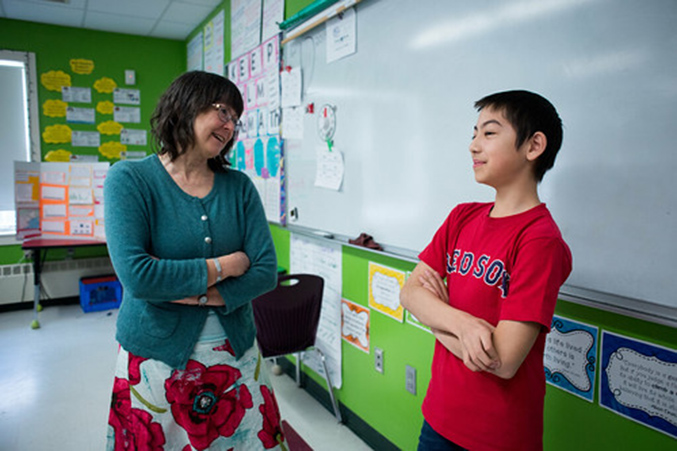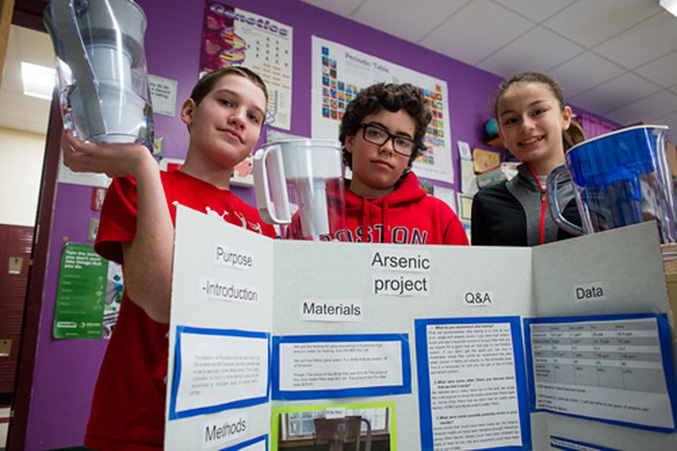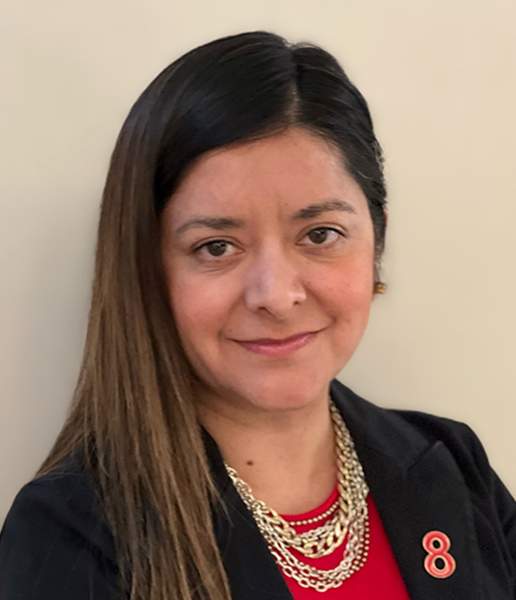School-Based Citizen Science Program Fills a Gap in Well Water Testing for Arsenic
A program in Maine and New Hampshire engaged teachers and students to help with testing for arsenic in residents’ well water, helping to meet a gap in such testing. Researchers with the Mount Desert Island (MDI) Biological Laboratory and Dartmouth College collaborated with middle- and high-school teachers to create the All About Arsenic (AAA) program, funded by the National Institutes of Health (NIH) and the Environmental Protection Agency (EPA). Through the program, students learn about environmental health and participate in water sample collection and analysis in their communities. An August 2024 paper describes the program and its public health impacts.
Students Support Well Water Testing
Maine and New Hampshire have high amounts of arsenic-containing bedrock, putting wells at risk of contamination. Wells can also become contaminated from historical use of arsenic-containing pesticides. Some wells in these states have been found to have arsenic levels far above the EPA’s maximum contaminant level of 10 parts per billion (ppb), with the highest in Maine at 3,100 ppb, and in New Hampshire at 1,040 ppb. Approximately half of households in Maine and New Hampshire use wells.
Arsenic exposure through drinking contaminated water has been linked to health issues such as bladder, prostate, lung, liver, and skin cancers, as well as cardiovascular and neurological problems. Bladder cancer rates in Maine and New Hampshire are about 20% higher than in the rest of the U.S.
Despite these risks, only about 40% of households that use wells in these states have tested their water. As private wells are not regulated like public drinking water, homeowners are responsible for protecting their health by testing and filtering their own well water.
The AAA program used a citizen science approach in that teachers and students were trained and collected water samples. They also provided information on the health effects of water contamination to their communities.

Disney and a student discuss the project. (Photo courtesy of Jane Disney)
“By engaging teachers and students in areas throughout both states, we were able to reach a number of households which had not previously tested for arsenic,” said Jane Disney, Ph.D., associate professor of environmental health at the MDI Biological Laboratory and lead investigator on the project. “The AAA program made a considerable contribution to the number of homes tested.”
The program ran from 2016 to 2022, and involved 31 teachers and more than 4,500 students from 27 middle and high schools. Teachers integrated education on environmental health and arsenic contamination into their lesson plans. Teachers also gave students water sample kits to test the water in their own homes and communities.
After samples were collected, the teachers sent them to a NIEHS-funded laboratory at Dartmouth for analysis. Results were added to an online system where residents could track their samples.

Students with a display of results of a water filter pitcher experiment. (Photo courtesy of Jane Disney)
Students and teachers supported data analysis of these initial samples and developed educational materials that they presented at community events. For example, students from one New Hampshire high school attended an elementary school’s parent-teacher nights and presented information on well water contamination and gave out test kits. This effort brought in 86 samples.
Residents Take Action to Protect Themselves From Arsenic Exposure
Students in the AAA program collected 3,070 samples. Of these, 14.8% had arsenic levels over 10ppb, and 24.5% of all households had arsenic levels over New Hampshire’s maximum contaminant level of 5 ppb.
The researchers surveyed members of households with wells that had arsenic levels above 5 ppb to find out whether these community members had ever taken steps, such as using filtration, to address well water contamination. Of 79 survey respondents, 56 had taken mitigation steps before the program. After the program, about a third of those who had made previous efforts to remove arsenic took additional steps. About 10% of respondents had not taken action to remove arsenic before the program but did afterward.
“We were happy to see that a number of residents who found out their water contained elevated arsenic levels made efforts to filter their water,” said Disney. “This showed us that aspects of the AAA program’s communications about health risks of arsenic likely made an impact.”

Students work on analyzing project data. (Photo courtesy of Jane Disney)
Survey respondents who tested their water and took measures to reduce their arsenic exposure were motivated by health risks. For example, a resident described being concerned for their family members who were consuming potentially contaminated water, so installing a filter was important to them. Respondents also described their choices not to use filters. One resident who chose not to filter indicated that using bottled water for drinking seemed more cost effective than using a filter, especially since they do not use their well water much for drinking. The high cost of whole-house filters was a barrier for many residents who chose to use another filtration option.
Results of AAA’s work have also informed state policy. Students used results from this work in presentations at public hearings for a Maine bill to provide remediation grants for homeowners and landlords with contaminated wells. The bill was passed in May 2022. Data from the AAA program will also be integrated into other statewide datasets on well water. Additionally, the research team has received another NIH grant to address other metals in well water and focus on science communication. The program continues to collect samples and has now collected more than 4,000.
NIEHS-Funded Researchers Develop Strategies to Convey Research Findings to Audiences
Researchers from Emory University, the University of Georgia, Spelman College, and a community organization came together to develop strategies to disseminate environmental health information to target audiences in an interactive format. In particular, they developed virtual reality tools that incorporated children’s environmental health education materials. Users of the virtual reality program could experience, for example, a sense of how air pollution from a neighboring factory might affect their home by simulating them looking out a window towards the factory. The authors recently published a case study detailing how this project was done.
Wildfire Smoke May Increase Dementia Risk More Than Other Sources of Air Pollution
An NIH-funded team found that exposure to fine particulate matter less than 2.5 microns in diameter (PM2.5) from wildfires was associated with an increased risk of receiving a dementia diagnosis. To study dementia risk for this study, the team looked at health data of people in southern California who were 60 or older and estimated their wildfire and non-wildfire PM2.5 exposure using air quality, weather, and wildfire data at the census tract level. The risk from wildfire smoke was higher than the risk from non-wildfire PM2.5 exposure. The team published their findings in January.
Wildfire Resources Available From NIH
NIEHS and the NIH have produced resources related to the health effects of wildfires, particularly for children and those responding to fires. In light of recent wildfires, the PEPH network is encouraged to share these broadly with those who may benefit from them.
The NIEHS Worker Training Program and its awardees have developed training resources that promote the health and safety of wildfire responders. The webpage also includes links to resources from other federal agencies.
The President’s Task Force on Environmental Health Risks and Safety Risks to Children has produced a list of resources to help families, healthcare professionals, and communities protect children’s health during and after wildfire events. Resources include the Western States Pediatric Environmental Health Specialty Unit’s guides on wildfire smoke and children, and a course for professionals involved in clinical or health education on addressing patients’ health related to wildfire smoke.
The PEPH podcast on wildfire smoke and children’s health also shares information on children’s health risks from wildfire smoke exposure and advice for parents to keep their children safe during wildfires.

PEPH Environmental Health Chat Podcast Series
The Evolution of the Community Engagement Core
PEPH Environmental Health Chat Podcast Series
The Evolution of the Community Engagement Core
As a crucial component of the NIEHS Environmental Health Sciences Core Centers, Community Engagement Cores (CECs) foster community partnerships for environmental health research. In the latest episode of the Environmental Health Chat podcast, Kathleen Gray, Ph.D., director of the CEC at the University of North Carolina at Chapel Hill, reflects on her experience working with communities to address environmental health issues and best practices for doing that. Gray also discusses the evolution of CECs over past decades.

PEPH Grantee Highlight
Liliana Aguayo, Ph.D.
Liliana Aguayo, Ph.D., is a scholar with the NIEHS-funded Pediatric and Reproductive Environmental Health Scholars (PREHS) program at Emory University who studies cardiovascular health disparities in children. She is also part of a program at Emory that provides health services to farmworker families. She uses community-based approaches to conduct research and develop programs that identify health issues. For example, she has helped develop a program that conducts health assessments of mothers and their children who attend a public kindergarten in Mexico. Aguayo has also worked to develop a dietary intervention to prevent a form of liver disease prevalent among certain children.
Funding Opportunities
There are no funding announcements at this time.






